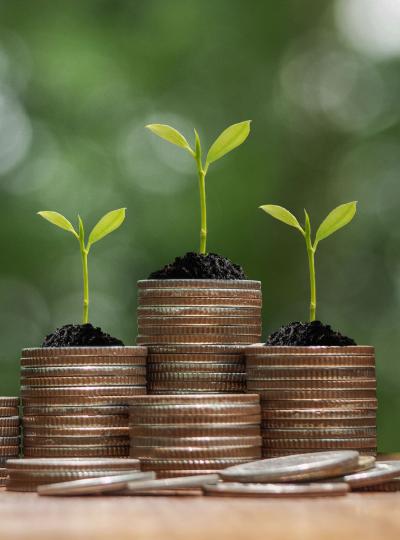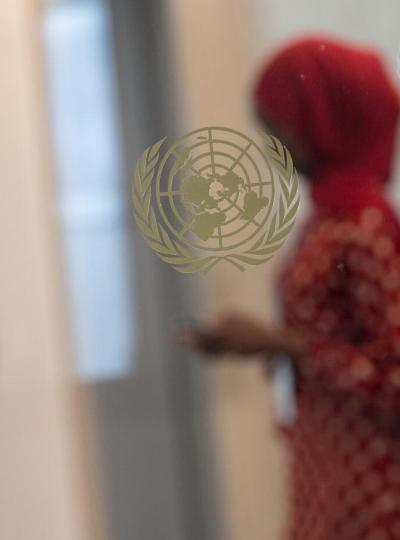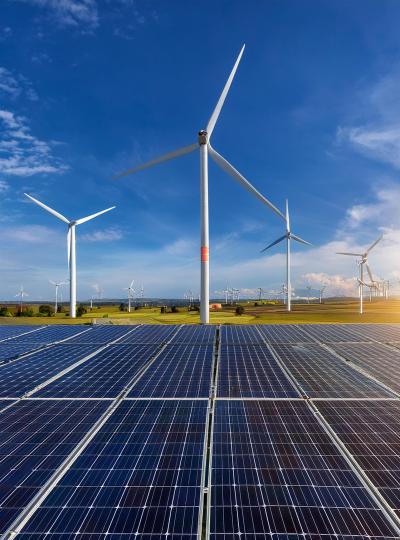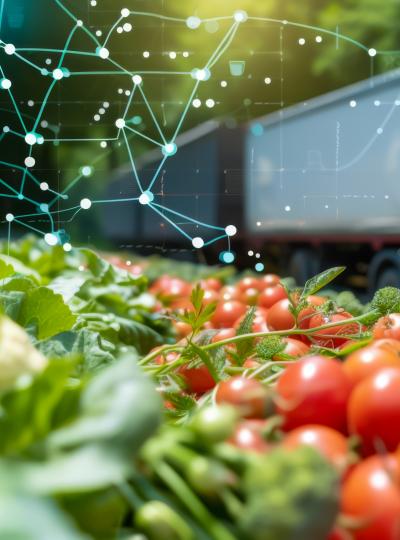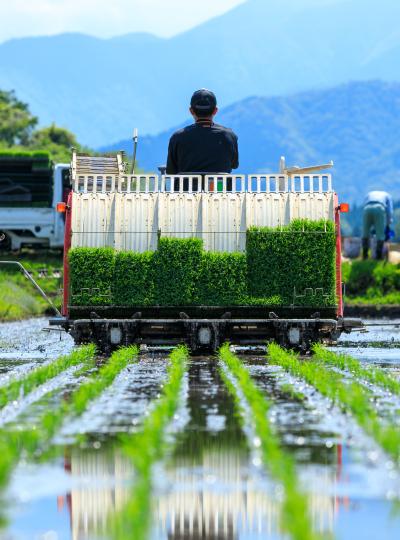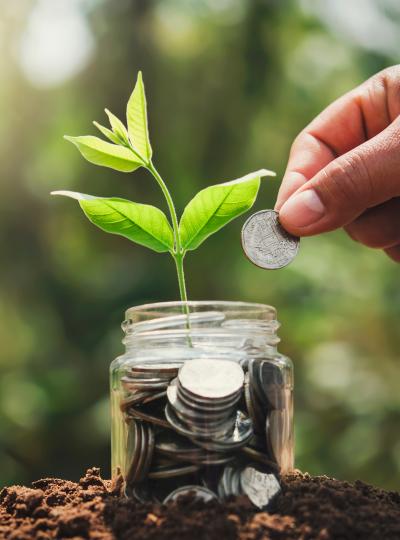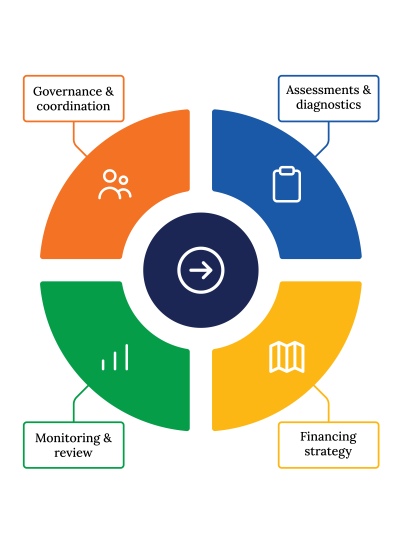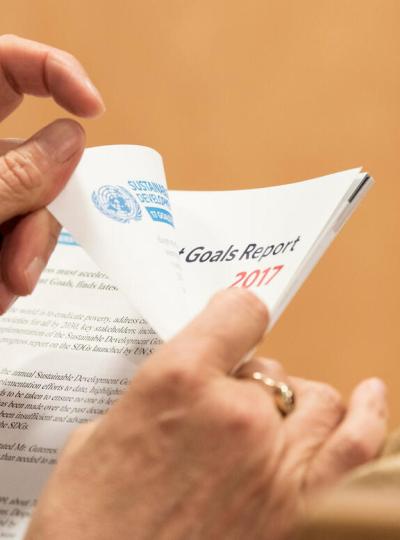Sustainable Cocoa Production
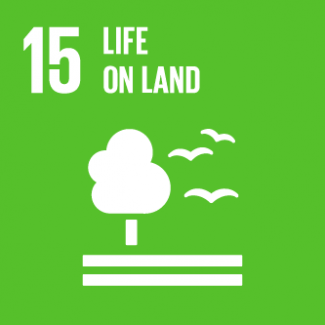
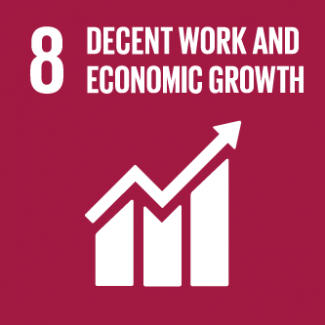
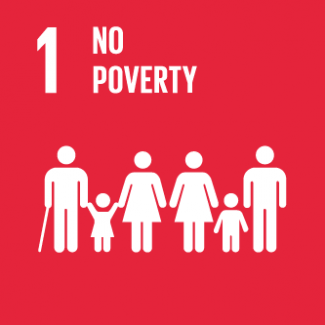
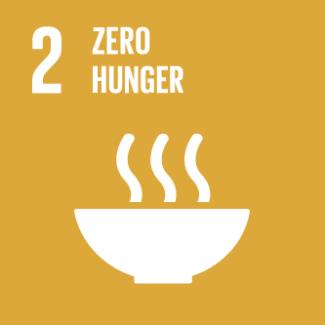
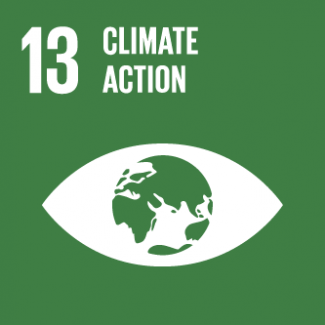
Business Model Description
Invest in companies or cooperatives cultivating and harvesting cocoa nuts through sustainable production methods such as agroforestry, organic practices, less reliant on pesticides, focusing on equitable trade practices. Sustainable production involves the early stages of the cocoa value chain, from deforestation-free farming and agroforestry to fair and transparent trade of nuts to cocoa processors to ensure equitable incomes for farmers.
Expected Impact
Protect forests, reduce pesticide use, and boost farmer incomes and working conditions, enhancing environmental health and economic resilience for communities.
How is this information gathered?
Investment opportunities with potential to contribute to sustainable development are based on country-level SDG Investor Maps.
Disclaimer
UNDP, the Private Finance for the SDGs, and their affiliates (collectively “UNDP”) do not seek or solicit investment for programmes, projects, or opportunities described on this site (collectively “Programmes”) or any other Programmes, and nothing on this page should constitute a solicitation for investment. The actors listed on this site are not partners of UNDP, and their inclusion should not be construed as an endorsement or recommendation by UNDP for any relationship or investment.
The descriptions on this page are provided for informational purposes only. Only companies and enterprises that appear under the case study tab have been validated and vetted through UNDP programmes such as the Growth Stage Impact Ventures (GSIV), Business Call to Action (BCtA), or through other UN agencies. Even then, under no circumstances should their appearance on this website be construed as an endorsement for any relationship or investment. UNDP assumes no liability for investment losses directly or indirectly resulting from recommendations made, implied, or inferred by its research. Likewise, UNDP assumes no claim to investment gains directly or indirectly resulting from trading profits, investment management, or advisory fees obtained by following investment recommendations made, implied, or inferred by its research.
Investment involves risk, and all investments should be made with the supervision of a professional investment manager or advisor. The materials on the website are not an offer to sell or a solicitation of an offer to buy any investment, security, or commodity, nor shall any security be offered or sold to any person, in any jurisdiction in which such offer would be unlawful under the securities laws of such jurisdiction.
Country & Regions
- Côte d'Ivoire: Bas-Sassandra
- Côte d'Ivoire: Montagnes
- Côte d'Ivoire: Sassandra-Marahoué
- Côte d'Ivoire: Comoé
- Côte d'Ivoire: Lagunes
Sector Classification
Food and Beverage
Development need
Agriculture and deforestation driven by agricultural expansion are the primary contributors to greenhouse gas emissions in Côte d'Ivoire. From 2010 to 2022, the intensive cultivation of cash crops (cocoa, rubber, palm oil, and coffee) on forested lands led to the degradation of 11% of the land, resulting in significant productivity losses (1, 11).
Policy priority
The National Agricultural Investment Program II seeks to elevate agriculture as Côte d'Ivoire's economic powerhouse, as Côte d'Ivoire remains dependent on imports to meet its nutritional needs. It targets 7.8% annual growth in agricultural production, supported by new agricultural clusters. In addition, the Pacte pour l'Alimentation et l'Agriculture aims to achieve national self-sufficiency in rice and fish by 2025, improve mechanization, reach 70% of private investment in the agricultural sector, and transform locally half of the crops (4, 8, 16).
Gender inequalities and marginalization issues
Agricultural production, including market gardening, cocoa, and rice, remains male-dominated, with access to land and credit for women remaining difficult. Women are underrepresented among farm owners, representing 10% of the total but accounting for almost 80% of food production. They are often employed as unpaid labor (2, 3, 5).
Investment opportunities introduction
Accounting for 28% of Côte d'Ivoire's GDP, the agricultural sector is one of the driving forces behind the economy. Côte d'Ivoire is the world's largest producer of cocoa and cashew nuts, 5th producer of palm oil, 7th producer of natural rubber and 4th producer of cotton. In addition, agriculture has forward linkages with the manufacture sector by providing inputs, including the agro-industry (e.g. chocolate) and textiles (cotton), thereby playing a key role for structural transformation (7).
Key bottlenecks introduction
Climatic hazards can have a major impact on food prices, as can logistical difficulties. The 2022/2023 season was affected by a rise in fertilizer prices due to the war in Ukraine. The amplitude of variations is set to increase with global warming (9, 17).
Food and Agriculture
Development need
Climate change poses risks to labor productivity and forest cover, threatening agricultural sustainability, notably cocoa, which contributes 40% to export earnings. Additionally, the degree of transformation is low - over half of cocoa beans are exported unprocessed, while the country depends on imports of fish and rice to cover its consumption (1, 10, 13).
Policy priority
The government aims to increase local processing of key crops (100% of cocoa beans by 2030, 2 MT of rice per year). It supports sustainable production under the National Agricultural Investment Plan II (2017-2025), promoting climate-smart agriculture. In its NDCs, it targets a 30.4% reduction in greenhouse gas emissions between 2021 and 2030 compared to a reference scenario (12, 14, 15).
Gender inequalities and marginalization issues
There are significant spatial inequalities in Côte d'Ivoire, with agricultural districts such as Montagnes having extreme poverty rates largely superior compared to urban areas, such as San Pedro and Abidjan (17).
Investment opportunities introduction
Côte d'Ivoire is the world's leading cocoa and cashew producer, with 2.4 million tons of cocoa to be produced by 2022. However, climate change is likely to cause major disruptions, cocoa production is expected to drop by 30% in the early 2023/2024 season. Further investments in staple food production are needed to reach self-sufficiency (6).
Key bottlenecks introduction
Agriculture requires increasing investment as soils are degraded in many regions, undermining productivity and posing a major environmental problem. In addition, the country's taxation system applicable to agriculture is complex and can inhibit the entry of new players (1).
Agricultural Products
Pipeline Opportunity
Sustainable Cocoa Production
Invest in companies or cooperatives cultivating and harvesting cocoa nuts through sustainable production methods such as agroforestry, organic practices, less reliant on pesticides, focusing on equitable trade practices. Sustainable production involves the early stages of the cocoa value chain, from deforestation-free farming and agroforestry to fair and transparent trade of nuts to cocoa processors to ensure equitable incomes for farmers.
Business Case
Market Size and Environment
> USD 1 billion
Côte d'Ivoire is the world’s largest cocoa producer and supplies 40% of the global cocoa, including exports worth USD 3.3 billion destined to the European Union (EU) in 2022. New EU legislation in 2023 requires cocoa imports to be deforestation-free, creating a more than one billion-dollar opportunity for sustainable cocoa production (23, 34, 58).
Indicative Return
> 25%
A study on the profitability of environmentally-friendly cocoa production in neighbouring Ghana found that the return on investment per hectare was 48.54% for agroforestry, 48.51% for high-tech model, but below 0 for full-sun models. Agroforestry integrates cocoa production with other trees and crops to mimic forest ecosystems and foster interactions (shade, nutrients). Full-sun models are more conventional, with maximized sunlight exposure to boost initial yields, which can however lead to soil degradation on the long-term (56).
Investment Timeframe
Short Term (0–5 years)
A study of the economic profitability of cocoa regeneration techniques in the Soubre Region (Côte d'Ivoire) found that profitability was achieved in less than five years (59).
In the case of loans, the repayment period can be relatively short. For instance, the ABC Impact Fund provided a loan to Ecookim specifically for the production season 2020/2021. Flexibility in terms of loan size, from a few thousands to about USD 865,000, relieve the repayment process (54).
Ticket Size
USD 1 million - USD 10 million
Market Risks & Scale Obstacles
Market - Volatile
Market - High Level of Competition
Impact Case
Sustainable Development Need
Cocoa-driven deforestation rose from 680 ha/kt in 2019 to 730 ha/kt by 2021, despite anti-deforestation efforts. Over two decades, 2.4 million hectares were lost, reducing biodiversity, climate resilience, and land for food production - posing severe risks to environmental and food security (50,51).
World Bank estimates indicate that if no action is taken to support a sustainable cocoa value chain, Côte d'Ivoire could face a cost of USD 2 billion until 2050 (1).
The entirety of Côte d'Ivoire's forests will have disappeared by 2034 if deforestation trends are not reversed. This poses a direct threat to communities depending on forest resources for food, fuel, and income, and may therefore exacerbate rural poverty (23).
Gender & Marginalisation
Women in cocoa production in earn less than men due to limited land ownership, lower access to credit, training, and farming inputs as well as cultural norms (22).
Cocoa producing areas such as the Montagnes district are particularly affected by extreme poverty rates, with two of its regions (Cavally and Tonkpi) exhibiting higher rates compared to national averages (17).
Expected Development Outcome
Sustainable cocoa production leads to reduced deforestation and improved revenues for farmers, curbing poverty and hunger (44, 45).
Sustainable cocoa production reduces the financial costs associated with deforestation and climate change.
Sustainable cocoa production mitigates deforestation by promoting practices that preserve forest cover, protect biodiversity, and maintain land for food production, enhancing ecosystem resilience to climate change (52, 53).
Gender & Marginalisation
Fair trade practices contribute to raising the income of farmers, and contributes to equal treatment of men and women (44, 45).
Sustainable cocoa production has forward linkages with agro-industry, forestry, and electricity-generation from biowaste, and can therefore acts as a lever for economic development in rural areas.
Primary SDGs addressed

15.1.1 Forest area as a proportion of total land area
15.2.1 Progress towards sustainable forest management
15.3.1 Proportion of land that is degraded over total land area
Forest area represented 9.2% of Côte d'Ivoire's total land area in 2023 (17).
The average annual rate of deforestation since 1986 is 2.8% (18).
11.84% of the total land area was degraded in 2019 (61).
The government's objective is to add 6 million hectares of forest cover by 2030, or 27% in total (19).
Increasing forest cover from 3 million hectares to 9 in ten years requires forest growth of 12% annually (19).
Côte d'Ivoire has made commitments to the African Forest Landscape Restoration Initiative to restore 5 million hectares of deforested landscapes by 2030. Its objective for protected areas was 2.25 million hectares in 2023 (14, 24).

8.5.1 Average hourly earnings of employees, by sex, age, occupation and persons with disabilities
In 2019, men's monthly revenues averaged 128,016 FCFA (USD 200) and women 78,541 FCFA (USD 129) (14).
The government targets equal pay between men and women by 2030 (28).
Secondary SDGs addressed



Directly impacted stakeholders
People
Gender inequality and/or marginalization
Planet
Corporates
Public sector
Indirectly impacted stakeholders
People
Gender inequality and/or marginalization
Planet
Corporates
Public sector
Outcome Risks
If monitoring and enforcement of sustainable farming practices are insufficient, farmers may continue unsustainable practices (e.g., illegal deforestation) while still benefiting from certification programs, leading to a reputational risk for the investor and reduced credibility in sustainability claims.
Impact Risks
If there is insufficient oversight on farming practices and the respect of labor laws, the sustainability of production might be lower than expected, and risks being akin to greenwashing.
If the margins along the cocoa value chains accrue primarily to the retailers, the benefits from sustainable production methods may not improve the livelihoods of local farmers. Previous surges in cocoa prices have been associated with a net increase of profits from foreign groups, but a stagnation or decline in farmers' revenues (32, 49).
If sustainable production is implemented alongside conventional agriculture, rather than replacing it, the effects on reducing deforestation and enhancing incomes are likely to be minimal.
Gender inequality and/or marginalization risk: If income redistribution mechanisms between buyers, managers and farm workers are poorly regulated either legally or contractually, poor women and workers may benefit little or not at all from the sustainability of production.
Impact Classification
What
Increasing sustainable cocoa production avoids deforestation while ensuring higher incomes for producers, particularly women.
Who
Farmers benefit from equitable practices, enjoying higher incomes, fixed prices, and less stringer output targets. The planet benefits from reduced deforestation.
Risk
Without strict oversight and fair distribution of value in the cocoa supply chain, sustainable practices risk being superficial ("greenwashing"), with limited impact on farmers' incomes, gender equity, or environmental goals.
Contribution
Sustainable cocoa production has forward linkages with agro-industry, forestry, and electricity-generation from biowaste. Due to the magnitude of intensive cocoa production's impact on deforestation, sustainable cocoa production has greatest potential.
How Much
Sustainable cocoa production contributes to the government's objective of restore forest cover to at least 20% of the total by 2030, with projects such as PROMIRE converting 1394 hectares of cocoa production into agroforestry systems (62, 67).
Impact Thesis
Protect forests, reduce pesticide use, and boost farmer incomes and working conditions, enhancing environmental health and economic resilience for communities.
Enabling Environment
Policy Environment
The National Agricultural Investment Program II (Programme National d'Investissement Agricole or PNIA II) seeks to elevate agriculture as a key economic driver in Côte d'Ivoire with 9% of its GDP, targeting an overall growth in the primary sector of 9% a year. It also aims to enhance productivity, secure food supply, and boost farmer earnings, emphasizing sustainable resource use and climate resilience (8).
Côte d'Ivoire's Nationally Determined Contributions (NDCs) promote deforestation-free cocoa farming, mentioning capacity-building efforts, benefit-sharing plans, and initiatives to reconcile cocoa cultivation with forest preservation (17).
The National Development Plan (2021-2025) aims to increase cocoa production and processing, promote sustainability and stabilize producers' incomes (12, 17).
Financial Environment
Financial incentives: Côte d'Ivoire set up a support fund for investment in the cocoa processing sector, with a 10 billion FCFA budget (USD 16.5 million). On April 22, 2020, the government announced a four-year subsidy of 35 CFA francs (USD 0.06) per kilogram to support national cocoa exporters' competitiveness (39).
Fiscal incentives: A reduction in the differentiated exported tax, a tax imposed on cocoa exporters, was announced in 2020. The Investment code provides other fiscal benefits to boost productivity (31).
Other incentives: The European Union offers financial support to enhance the sustainability of cocoa production in Côte d'Ivoire. It set up a €25 million (USD 27 million) fund aimed at ensuring a decent living income for farmers, halting deforestation, and eliminating child labor in the cocoa sector (30).
Other incentives: Launched in 2021, the PROMIRE project in Côte d'Ivoire aims to promote deforestation-free cocoa production, with a USD 10 million budget funded by the Green Climate Fund. Implemented by FAO over five years, it targets 7,000 hectares and involves 32 villages (43).
Regulatory Environment
The 2019 headquarters agreement of the Côte d'Ivoire-Ghana Cocoa Initiative (ICCIG) established a price-fixing mechanism for cocoa. It creates a "Living income differential" of 400 USD per tonne in addition to market price to address income disparities for cocoa farmers, which is currently in place (21, 36, 42).
Decree No. 2012-1008 outlines the rules regarding the commercialization of coffee and cocoa. It reformed the "Conseil Café-Cacao", the main regulatory body for cocoa production in the country. The entity is in charge of regulating the industry, stabilizing the prices, and sets for two years the price received by cocoa farmers, to ensure that they receive a fair revenue (37, 41).
In 2024, the Conseil du Café-Cacao announced its intention to reduce the number of certified cocoa buyers from over a thousands to 30 in order to combat fraud (38).
Decree No. 2012-1011 sets regulations for cocoa exports from Côte d'Ivoire, defining quality standards, acceptable defect levels, and classifying cocoa into grades. It also mandates quality control and phytosanitary treatment before export (24).
The ARS 1000 standard is an African sustainability and traceability framework for cocoa production, jointly developed by Côte d’Ivoire and Ghana and adopted through the African Organization for Standardization (ARSO). It aims to ensure that cocoa production is sustainable, free from deforestation, and meets international market demands (48).
Marketplace Participants
Private Sector
Cargill, Nestlé, Mondelez International, Mars, Fairtrade, Ivory Cocoa Product, CITRAC, Confédération Générale des Entreprises de Côte d’Ivoire (CGECI), Socak Katana, ABC Fund, Oikocredit, Ecookim, Ethiquable, Société coopérative équitable du Bandama, Société Coopérative des Producteurs de Cacao Biologique de la Mé, Alter Eco (63, 64, 65, 66).
Government
Ministry of Agriculture and sustainable development, Ministry of commerce and industry, Agence du Foncier Rural (AFOR), Conseil Café-Cacao, Centre de Promotion des Investissements en Côte d’Ivoire (CEPICI).
Multilaterals
African Development Bank (AfDB), Food and Agriculture Organization (FAO), United Nations Development Programme (UNDP), African Development Fund, Africa Growth Together Fund, European Union, African Organization for Standardization (ARSO).
Non-Profit
The Cocoa and Forests Initiative (CFI), The Sustainable Trade Initiative, Prince of Wales International Sustainability Unit, Groupement Professionnel des Exportateurs de Café Cacao (GEPEX), Agronomes et vétérinaires sans frontières, Gesellschaft für Internationale Zusammenarbeit (GiZ), Business France.
Public-Private Partnership
The Cocoa & Forests Initiative (CFI) operates as a public-private partnership (PPP) platform, uniting the governments of Côte d'Ivoire and Ghana, and chocolate companies (including Mars, Mondelez, and Cargill), and other stakeholders to end deforestation and restore forest areas in Ghana and Côte d'Ivoire (57).
Target Locations
Côte d'Ivoire: Bas-Sassandra
Côte d'Ivoire: Montagnes
Côte d'Ivoire: Sassandra-Marahoué
Côte d'Ivoire: Comoé
Côte d'Ivoire: Lagunes
References
- (1) Groupe de la Banque Mondiale. 2023. Rapport national sur le climat et le développement. https://openknowledge.worldbank.org/bitstreams/394b9ab5-878b-42bd-bd19-374d05aac64e/download
- (2) Beyond Beans. 2023. Raising the Bar: Cocoa and Gender Equality in Côte d'Ivoire. https://beyondbeans.org/2023/03/08/raising-the-bar-cocoa-and-gender-equality-in-cote-divoire/
- (3) Confectionery News. 2018. Gender equality in the cocoa trade: two female farmers from Côte d'Ivoire readdress the balance. https://www.confectionerynews.com/Article/2018/10/16/Gender-equality-in-the-cocoa-trade-two-female-farmers-from-Cote-d-Ivoire-readdress-the-balance
- (4) CIRAD. 2018. Étude d’identitification et d’analyse des contraintes à la production maraîchère selon les grandes zones agro-climatiques de la Côte d’Ivoire. https://agritrop.cirad.fr/591600/1/Rapport%20complet%20Maraichage%20RCI%20CIRAD%20FIRCA%20VF%20%202019.pdf
- (5) FIRCA. 2022. Genrer, pour une répartition équitable des revenus agricoles. https://firca.ci/blog/repartition-equitable-des-revenus-agricoles-en-matiere-de-genre/
- (6) Africa News. 2023. Côte d'Ivoire : la saison du cacao 2023/2024 menacée par les intempéries. https://fr.africanews.com/2023/10/04/cote-divoire-la-saison-du-cacao-20232024-menacee-par-les-intemperies/
- (7) Ministry of Agriculture (France). 2019. Côte d'Ivoire : contexte agricole et relations internationales. https://agriculture.gouv.fr/cote-divoire-contexte-agricole-et-relations-internationales
- (8) Ministère de l'Agriculture et du développement rural. 2017. Programme National d'Investissement Agricole II - 2018-2025. https://www.gafspfund.org/sites/default/files/inline-files/7a.%20Ivory%20Coast_Investment%20Plan.pdf
- (9) Oxford Business Group. 2020. How Côte d'Ivoire is making cocoa sustainable. https://oxfordbusinessgroup.com/reports/cote-divoire/2020-report/economy/sustainable-cocoa-public-and-private-sector-initiatives-are-engineering-a-favourable-environmental-and-economic-outlook
- (10) Le Monde. 2023. En Côte d'Ivoire, la filière cacao passe à la vitesse supérieure. https://www.lemonde.fr/afrique/article/2023/02/15/en-cote-d-ivoire-la-filiere-cacao-passe-a-la-vitesse-superieure_6161978_3212.html
- (11) Alter Eco. 2024. Nos producteurs partenaires. https://www.altereco.com/produit/chocolat-noir-81-cote-divoire
- (12) Gouvernement de la Côte d'Ivoire. 2021. Plan National de Développement PND 2021-2025. https://dcf.ci/dcf.ci/wp-content/uploads/2021/09/PND-2021-2025_Tome-1_Diagnostic-strate%CC%81gique.pdf
- (13) Le Monde. 2024. La Côte d’Ivoire suspend l’exportation de produits vivriers au nom de « la sécurité alimentaire ». https://www.lemonde.fr/afrique/article/2024/01/23/la-cote-d-ivoire-suspend-l-exportation-de-produits-vivriers-au-nom-de-la-securite-alimentaire_6212541_3212.html
- (14) Gouvernement de Côte d'Ivoire. 2022. Deuxième Rapport National Volontaire de la Côte d'Ivoire. https://hlpf.un.org/sites/default/files/vnrs/2022/VNR%202022%20Cote%20dIvoire%20Report_0.pdf
- (15) Gouvernement de Côte d'Ivoire. 2018. Transformation de riz paddy: Bientôt 30 unités industrielles mises en service en Côte d'Ivoire. https://www.gouv.ci/_actualite-article.php?recordID=8927
- (16) African Union. 2023. Pacte pour l'Alimentation et l'Agriculture. 2023. https://www.afdb.org/fr/documents/cote-divoire-pacte-pour-lalimentation-et-lagriculture
- (17) Ministère de l'Economie, du Plan et du Développement. 2023. Plan National de Développement 2021-2025. Rapport Annuel 2023. RAPPORT ANNUEL 2023
- (18) Cirad. 2021. La forêt et la faune de Côte d'Ivoire dans une situation alarmante. https://revues.cirad.fr/index.php/BFT/article/view/36939
- (19) Geo. 2022. Un inventaire des fôrets pour un plan de reboisement. https://www.geo.fr/environnement/cote-divoire-un-inventaire-des-forets-pour-un-plan-de-reboisement-198408
- (20) Crédit Agricole. 2023. En Afrique de l'Ouest, cacao et déforestation vont de pair. https://etudes-economiques.credit-agricole.com/Publication/2023-mars/en-afrique-de-l-ouest-cacao-et-deforestation-vont-de-pair
- (21) Assiri, A. 2016. Antécédents culturaux et identification de quelques pratiques paysannes en replantation cacaoyère en Côte d'Ivoire. https://www.researchgate.net/publication/294722822
- (22) Commerce Equitable France. 2022. L'accès au foncier : un défi pour l'égalité femmes-hommes. https://www.commercequitable.org/actualites/interview-assata-doumbia-presidente-dune-cooperative-ivoirienne-de-cacao/
- (23) National Geographic. 2019. Les cultures de cacao aggravent le phénomène de déforestation en Afrique. https://www.nationalgeographic.fr/environment/les-cultures-de-cacao-aggravent-le-phenomene-de-deforestation-en-afrique#:~:text=La%20d%C3%A9forestation%20ill%C3%A9gale%20est%20encore,premiers%20producteurs%20de%20cacao%20mondiaux.&text=Pr%C3%A8s%20de%2014%20000%20hectares,15%20000%20terrains%20de%20football.
- (24) Présidence de la République. 2012. Decret n° 2012-1011 du 17 octobre 2012 fixant les rnodalites de conditionnernent du cacao a I'exportation. https://faolex.fao.org/docs/pdf/IVC132138.pdf
- (25) AGRA. 2019. ABC Fund makes first investment, backing cooperative in Côte d'Ivoire. https://agra.org/news/abc-fund-makes-first-investment-backing-cocoa-cooperative-in-cote-divoire/
- (26) Oikocredit. 2020. € 7 million to support smallholder cocoa producers in Côte d’Ivoire. https://www.oikocredit.coop/k/fr/n171/news/view/329870/462/7-million-to-support-smallholder-cocoa-producers-in-cote-d-ivoire.html
- (27) Ethiquable. 2024. SCEB, Commerce équitable Côte d'Ivoire - Cacao. https://www.ethiquable.coop/fiche-producteur/sceb-commerce-equitable-cote-divoire-cacao
- (28) Nitidae. ETHIQACAO - Appui à la SCEB (Société Coopérative Equitable du Bandama) pour la certification équitable et biologique du cacao. https://www.nitidae.org/actions/appui-a-la-sceb-societe-cooperative-equitable-du-bandama-pour-la-certification-equitable-et-biologique-du-cacao.pdf
- (29) Nitidae. 2022. PRM2 - Préserver la biodiversité de Mabi Yaya, renforcer le développement socio-économique de la Mé. https://www.nitidae.org/actions/prm2-preserver-la-biodiversite-de-mabi-yaya-renforcer-le-developpement-socio-economique-de-la-me
- (30) European Commission. 2021. EU Boosts sustainable cocoa production in Côte d'Ivire, Ghana, and Cameroon. https://international-partnerships.ec.europa.eu/news-and-events/news/eu-boosts-sustainable-cocoa-production-cote-divoire-ghana-and-cameroon-2021-01-26_en
- (31) Oxford Business Group. 2020. How will new incentives benefit Ivorian raw cocoa processors? https://oxfordbusinessgroup.com/reports/cote-divoire/2020-report/economy/rise-and-grind-benefitting-from-new-incentives-investment-pledges-made-in-2019-are-set-to-significantly-boost-raw-cocoa-processing
- (32) FAO/BASIC. 2020. Étude comparative de la répartition de la valeur au sein des filières européennes de cacao-chocolat. https://openknowledge.fao.org/server/api/core/bitstreams/95b62761-677f-41c4-ac78-c6b611b6496b/content
- (33) Ecole de Paris du Management. 2007. Le modèle économique du commerce équitable. https://www.google.com/url?sa=t&rct=j&q=&esrc=s&source=web&cd=&cad=rja&uact=8&ved=2ahUKEwilnLGQsMuEAxU7U6QEHWGCBfAQFnoECCoQAQ&url=https%3A%2F%2Fhttps://www.ecole.org%2Ffr%2Fdownload-seance-cr%2F760&usg=AOvVaw2e5QEF_OmLSaEDJ-CTMKGu&opi=89978449
- (34) Le Monde. 2019. En Côte d'Ivoire, le cacao équitable tente de tenir ses promesses. https://www.lemonde.fr/afrique/article/2019/11/28/en-cote-d-ivoire-le-cacao-equitable-tente-de-tenir-ses-promesses_6020913_3212.
- (35) Fratmat. 2020. Production de cacao, le rendement passe de 400 à 680kg à l'hectare. https://www.fratmat.info/article/209483/conomie/production-de-cacao-le-rendement-passe-de-400-a-680-kg-a-lhectare
- (36) International Institute for Environment and Development. 2021. Civil societies perspectives, living income differential for cocoa producers. https://www.iied.org/civil-society-perspectives-living-income-differential-for-cocoa-producers
- (37) Gouvernement de la Côte d'Ivoire. 2012. REFORME DU CAFE-CACAO : LES DIRIGEANTS DU CONSEIL DU CAFE-CACAO INSTALLES EN PRESENCE DU MINISTRE DE L’AGRICULTURE. https://www.gouv.ci/_actualite-article.php?d=1&recordID=2023
- (38) Agence Ecofin. 2024. Côte d’Ivoire : le CCC réfléchit à des mesures de lutte contre la fraude à la certification dans le cacao. https://www.agenceecofin.com/gestion-publique/2405-118937-cote-d-ivoire-le-ccc-reflechit-a-des-mesures-de-lutte-contre-la-fraude-a-la-certification-dans-le-cacao
- (39) Jeune Afrique. 2020. Le gouvernement ivoirien instaure une subvention inédite pour la filière cacao. https://www.jeuneafrique.com/933167/economie-entreprises/le-gouvernement-instaure-une-subvention-inedite-pour-la-filiere-cacao/
- (40) Sciences et Avenir. 2016. Côte d'ivoire : la culture du cacao favorise la déforestation. https://www.sciencesetavenir.fr/nature-environnement/cote-d-ivoire-la-culture-du-cacao-favorise-la-deforestation_116364
- (41) Présidence de la République. 2012. Decret No. 2012·1 008 du 17 octobre 2012 fixant les rnodalites de commercialisation du cafe et du cacao. https://faolex.fao.org/docs/pdf/IVC132084.pdf
- (42) Gouvernement de Côte d'Ivoire. 2021. Initiative Cacao Côte d'Ivoire-Ghana: les deux pays signent l'accord de siège à Accra. https://www.gouv.ci/_actualite-article.php?recordID=12496&d=1
- (43) Green Climate Fund. 2020. Promoting zero-deforestation cocoa production for reducing emissions in Côte d’Ivoire (PROMIRE). https://www.greenclimate.fund/document/promoting-zero-deforestation-cocoa-production-reducing-emissions-c-te-d-ivoire-promire
- (44) Knößlsdorfer, Isabel. et al. 2021. Effects of Fairtrade on farm household food security and living standards: Insights from Côte d’Ivoire. https://www.sciencedirect.com/science/article/pii/S2211912421000456
- (45) Sellare, J. et al. 2020. Do Sustainability Standards Benefit Smallholder Farmers Also When Accounting For Cooperative Effects? Evidence from Côte d'Ivoire. https://onlinelibrary.wiley.com/doi/full/10.1002/ajae.12015
- (46) BBC. 2024. Qu'est-ce qui se cache derrière la flambée des prix du chocolat et du cacao ? https://www.bbc.com/afrique/articles/cpeewp7002jo#:~:text=Le%20cacao%20co%C3%BBte%20environ%2012,semaine%20de%20mai%20en%202024.
- (47) Gouvernement de Côte d'Ivoire. 2024. Evolution de la production de fèves de cacao de la Côte d'Ivoire de 1961 à 2021. https://data.gouv.ci/applications/production-de-feves-de-cacao-de-la-cote-divoire-de-1961-a-2021-series-temporelles
- (48) APA News. 2024. Cacao durable : la Côte d’Ivoire lance la norme africaine ARS 1000. https://fr.apanews.net/agriculture/cacao-durable-la-cote-divoire-lance-la-norme-africaine-ars-1000/
- (49) The CFO. 2024. The bitter taste of rising cocoa costs. https://the-cfo.io/2024/04/25/the-bitter-taste-of-rising-cocoa-costs/
- (50) Trase. 2022. Les exportations de cacao sont un moteur de déforestation en Côte d’Ivoire. https://trase.earth/insights/les-exportations-de-cacao-sont-un-moteur-de-deforestation-en-cote-d-ivoire
- (51) Trase. 2024. Exportations de cacao de Côte d’Ivoire et déforestation. https://trase.earth/insights/exportations-de-cacao-de-cote-d-ivoire-et-deforestation
- (52) World Bank. 2017. Eliminating Deforestation from the Cocoa Supply Chain. https://www.researchgate.net/profile/Haseeb-Bakhtary/publication/346926582_Eliminating_Deforestation_from_the_Cocoa_Supply_Chain/links/5fdcc69a92851c13fe9c1fd4/Eliminating-Deforestation-from-the-Cocoa-Supply-Chain.pdf
- (53) Fair Trade. 2024. Final Report: The Effect of Fairtrade on Forest Protection and Deforestation Prevention. https://files.fairtrade.net/publications/Fairtrade-forest-protection-and-deforestation-prevention-study-2024.pdf
- (54) Bamboocp. 2020. The ABC Fund invests in Ecookim to improve the livelihoods of smallholder farmers in Côte d’Ivoire. https://www.bamboocp.com/wp-content/uploads/201127-Ecookim-VF-1.pdf
- (55) Kalischek, N. et al. 2023. Cocoa plantations are associated with deforestation in Côte d’Ivoire and Ghana. https://www.nature.com/articles/s43016-023-00751-8
- (56) Imani Center for Policy & Education. 2024. Assessment of the profitability and environmental sustainability of cocoa farming models in Ghana. https://imaniafrica.org/2024/02/assessment-of-the-profitability-and-environmental-sustainability-of-cocoa-farming-models-in-ghana/
- (57) OFI. 2023. Cocoa & Forests Initiative report 2023. https://www.ofi.com/content/dam/olamofi/sustainability/sustainability-pdfs/CFI-2023-report-latest.pdf
- (58) Financial Afrik. 2023. Côte d’Ivoire : le volume des exportations de cacao vers l’Union européenne franchit la barre de 3 milliards d’euro. https://www.financialafrik.com/2023/10/13/cote-divoire-le-volume-des-exportations-de-cacao-vers-lunion-europeenne-franchit-la-barre-de-3-milliards-deuro/
- (59) Adolphe, M. G. et al. 2021. Rentabilité économique des techniques de régénération cacaoyère dans la région de Soubré au Sud-Ouest de la Côte d'Ivoire. https://www.google.com/url?sa=t&rct=j&q=&esrc=s&source=web&cd=&ved=2ahUKEwiIvtnUwbiJAxVbAPsDHagwMVYQFnoECDMQAQ&url=https%3A%2F%2Fwww.ajol.info%2Findex.php%2Faga%2Farticle%2Fview%2F220406%2F207983&usg=AOvVaw0tmckbumyjZsiFc4rdeTNd&opi=89978449
- (60) Parra-Paitan, C. and P. H. Verburg. 2022. Accounting for land use changes beyond the farm-level in sustainability assessments: The impact of cocoa production. https://www.sciencedirect.com/science/article/pii/S004896972201124X
- (61) United Nations Convention to Combat Desertification. 2019. Côte d'Ivoire. https://data.unccd.int/country-overview?country=CIV&layer=TOTAL_POPULATION_EXPOSED_TO_LAND_DEGRADATION_REPORTING
- (62) World Cocoa Foundation. 2022. Plan d'Action 2022-2025. https://worldcocoafoundation.org/storage/files/cfi-plan-daction-2022-2025-vf.pdf
- (63) Jeune Afrique. 2020. Barry Callebaut, Cargill, Olam… Comment les géants du cacao se sont mis au « vert ». https://www.jeuneafrique.com/1006612/economie-entreprises/comment-les-geants-du-cacao-se-sont-mis-au-vert/
- (64) Syndicat du chocolat. 2019. LES ENTREPRISES AGISSENT POUR UN CACAO DURABLE. https://www.syndicatduchocolat.fr/wp-content/uploads/2019/04/PanoramaRSE_DP_BD.pdf
- (65) Coordination Sud. 2024. RÉGULER LES FILIÈRES ET LES ÉCHANGES COMMERCIAUX POUR DES SYSTÈMES ALIMENTAIRES DURABLES ET ÉQUITABLES. https://ccfd-terresolidaire.org/wp-content/uploads/2024/03/ccfd-terresolidaire.org-reguler-les-filieres-et-les-echanges-commerciaux-reguler-25.01.24-web.pdf
- (66) Amiel, F. et al. (Iddri). 2019. Les chaînes de valeur agricoles au défi de la biodiversité : l’exemple du cacao-chocolat. https://www.iddri.org/sites/default/files/PDF/Publications/Catalogue%20Iddri/Etude/201910-ST0519-cacao_0_0.pdf
- (67) UN-REDD Programme. 2024. Le cacao ivoirien engagé dans une transition écologique : Comment le projet PROMIRE allie production et conservation. https://www.un-redd.org/post/le-cacao-ivoirien-engage-dans-une-transition-ecologique-comment-le-projet-promire-allie

